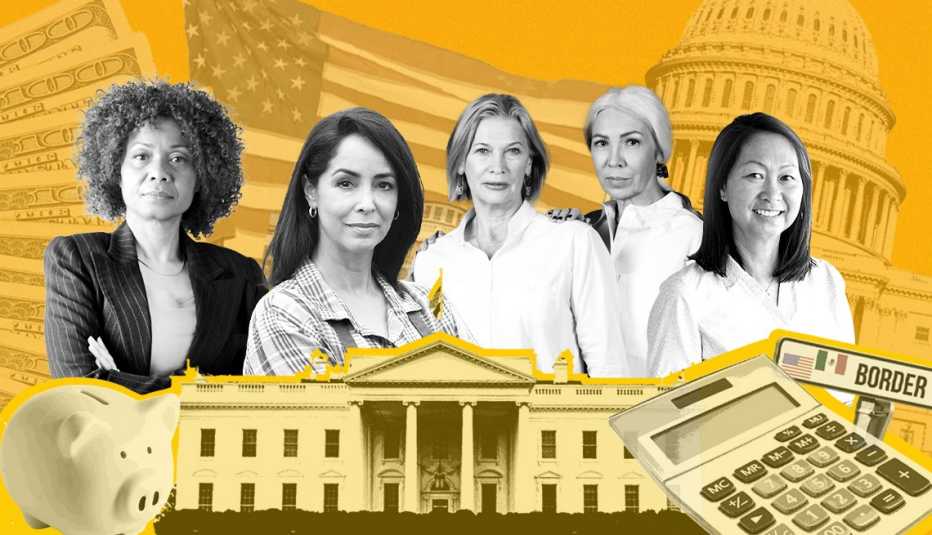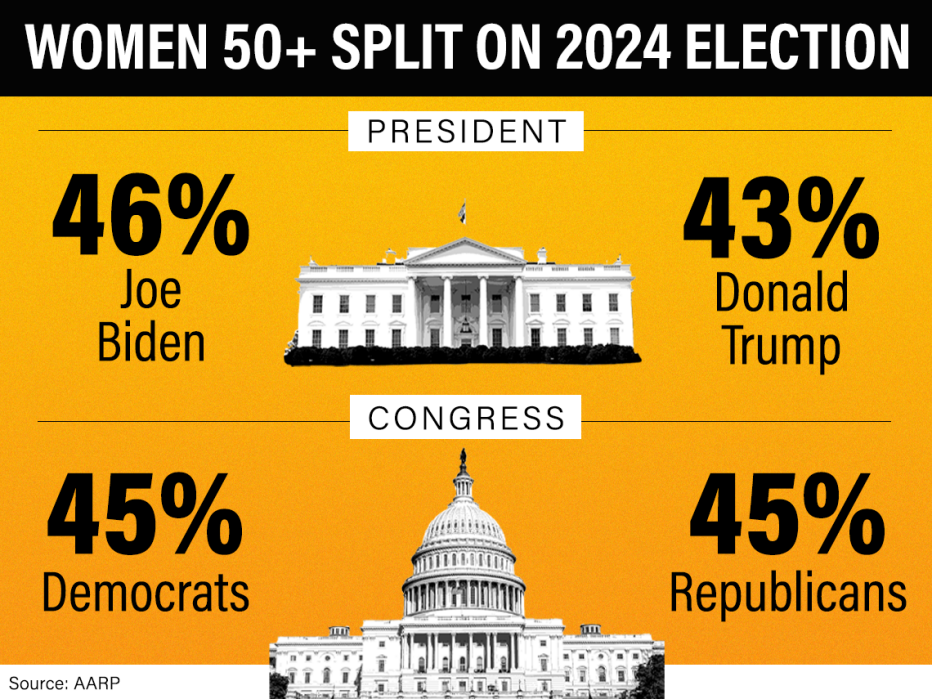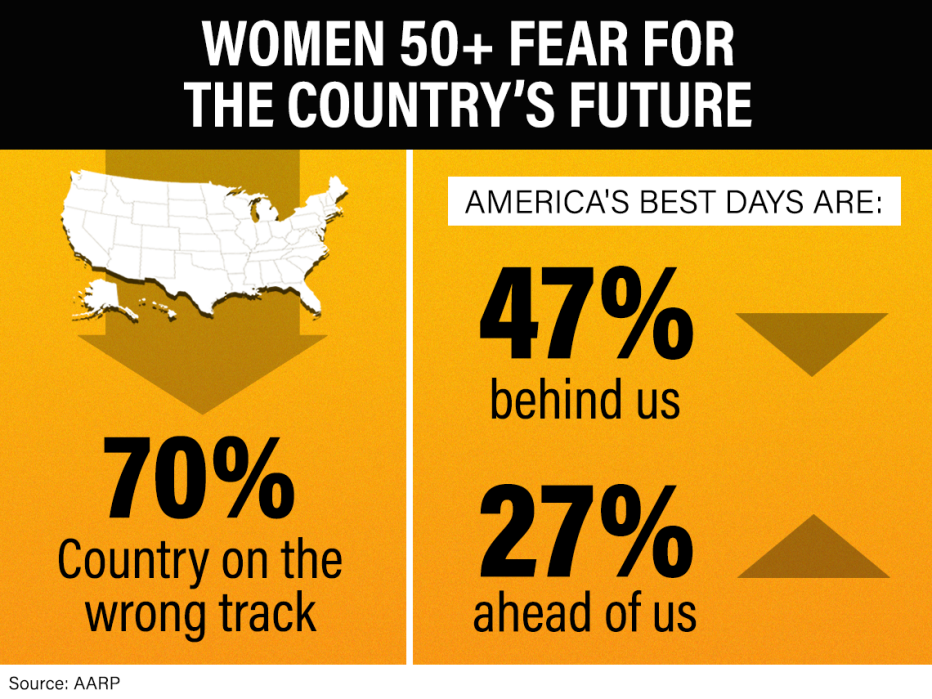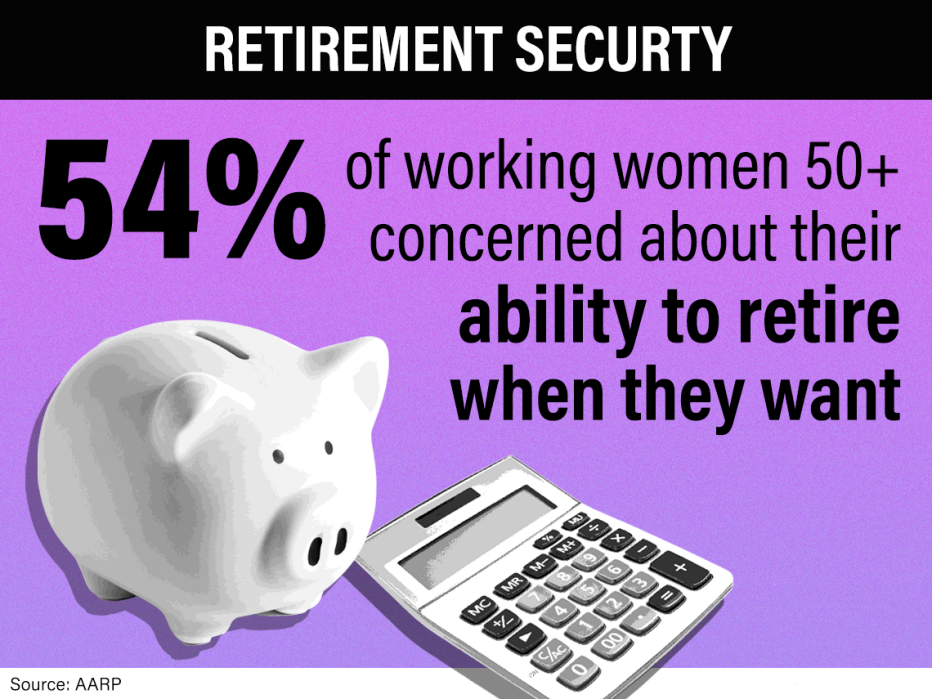Staying Fit


They vote in big numbers. They are invested in the nation’s future and worried about a wide range of issues — from the cost of living to immigration to the state of our democracy to their ability to retire. They are women 50 and older, and they could be the biggest wild card in this fall’s elections, according to an AARP public opinion poll.
AARP’s latest “She’s the Difference” survey echoes past findings that older women pay close attention to upcoming elections and that their votes could make the difference in who occupies the White House over the next four years and which political party controls Congress.


AARP Membership— $12 for your first year when you sign up for Automatic Renewal
Get instant access to members-only products and hundreds of discounts, a free second membership, and a subscription to AARP the Magazine.
“Three factors make women aged 50 and up a particularly critical voting group in this election,” says Nancy LeaMond, AARP executive vice president and chief advocacy and engagement officer. “First, they are a big group — close to 62 million across the country. Second, they turn out to vote. Older women cast one-third of ballots in 2022 while accounting for just over a quarter of the voting-age population. And third, they are evenly divided by party and ideologically fall more in the center than their male counterparts. This makes them a key swing voting bloc that can decide elections.”
The AARP survey was conducted by national pollsters Kristen Soltis Anderson, a GOP strategist, and Margie Omero, a Democratic consultant. They say the wide range of views among 50-plus women make them a clear wild card when it comes to whom they decide to vote for.


Election races deadlocked
If the election were held now, 46 percent of poll respondents said they would vote in a head-to-head matchup to reelect President Joe Biden, and 43 percent would cast their ballot for former President Donald Trump. From Jan. 10 to 21, the online survey polled 2,001 likely women voters 50 and older and had a margin of error of plus or minus 3 percentage points.
The survey also showed a dead heat for control of Congress. In a generic congressional ballot, Republicans and Democrats tied at 45 percent. Republicans have a narrow majority in the U.S. House of Representatives while Democrats have slim control in the Senate.
The virtual split in views shows that “there are a lot of women who feel frustrated with the choices available to them,” Soltis Anderson says. “There are a lot of concerns about what the election will mean for our country. We’re seeing a very closely divided contest where voters of all kinds, particularly women 50-plus, aren’t really sure who’s got the answers to the problems we’re facing.”
For Omero, the results indicate “how important it is for anyone who wants to represent this group to really listen and take care to engage these voters.” The survey found that 65 percent of women voters 50-plus said they believe local elected officials don’t listen to the views of people like them and 75 percent feel that way about political leaders in Washington.
Though older women may be among those who wait almost until Election Day to decide whom to vote for, Soltis Anderson says, the survey makes clear that “these are women who are tuned in. They are already paying attention to what the candidates have to say, and they’re trying to sort out what that might mean for their votes in November.”







































































More From AARP
Your Guide to 2024 Election Primaries
From ID requirements to absentee ballots, what you need to know before votingAARP Holds Presidential Hopefuls’ Feet to the Fire
During campaign stops, candidates pressed on key issues11 Ways to Fight Election Disinformation
The 2024 election is on the horizon. How can you tell if photos, videos and stories are real?Recommended for You